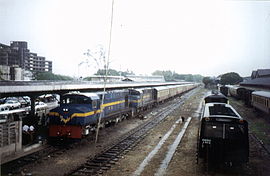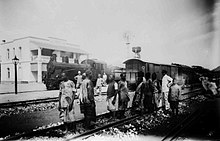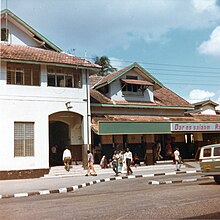Tanganyika Railway
| Tanganyika Railway | |||||||||||||||||||||||||||||||||||||||||||||||||||||||||||||||||||||||||||||||||||||||||||||||||||||||||||||||||||||||||||||||||||||||||||||||||||||||||||||||||||||||||||||||||||||||||||||||||||||||||||||||||||||||||||||||||||||||||||||||||||||||||||||||||||||||||||||||||||||||||||||||||||||||||||||||||||||||||||||||||||||||||||||||||||||||||||||||||||||||||||||||||||||||||||||||||||||||||||||||||||||||||||||||||||||||||||||||||||||
|---|---|---|---|---|---|---|---|---|---|---|---|---|---|---|---|---|---|---|---|---|---|---|---|---|---|---|---|---|---|---|---|---|---|---|---|---|---|---|---|---|---|---|---|---|---|---|---|---|---|---|---|---|---|---|---|---|---|---|---|---|---|---|---|---|---|---|---|---|---|---|---|---|---|---|---|---|---|---|---|---|---|---|---|---|---|---|---|---|---|---|---|---|---|---|---|---|---|---|---|---|---|---|---|---|---|---|---|---|---|---|---|---|---|---|---|---|---|---|---|---|---|---|---|---|---|---|---|---|---|---|---|---|---|---|---|---|---|---|---|---|---|---|---|---|---|---|---|---|---|---|---|---|---|---|---|---|---|---|---|---|---|---|---|---|---|---|---|---|---|---|---|---|---|---|---|---|---|---|---|---|---|---|---|---|---|---|---|---|---|---|---|---|---|---|---|---|---|---|---|---|---|---|---|---|---|---|---|---|---|---|---|---|---|---|---|---|---|---|---|---|---|---|---|---|---|---|---|---|---|---|---|---|---|---|---|---|---|---|---|---|---|---|---|---|---|---|---|---|---|---|---|---|---|---|---|---|---|---|---|---|---|---|---|---|---|---|---|---|---|---|---|---|---|---|---|---|---|---|---|---|---|---|---|---|---|---|---|---|---|---|---|---|---|---|---|---|---|---|---|---|---|---|---|---|---|---|---|---|---|---|---|---|---|---|---|---|---|---|---|---|---|---|---|---|---|---|---|---|---|---|---|---|---|---|---|---|---|---|---|---|---|---|---|---|---|---|---|---|---|---|---|---|---|---|---|---|---|---|---|---|---|---|---|---|---|---|---|---|---|---|---|---|---|---|---|---|---|---|---|---|---|---|---|---|---|---|---|---|---|---|---|---|---|---|---|---|---|---|---|---|---|---|---|---|---|---|---|---|---|---|---|---|---|---|---|---|---|---|---|---|---|---|---|---|---|---|---|---|---|---|---|---|---|---|---|---|---|
| Geographical data | |||||||||||||||||||||||||||||||||||||||||||||||||||||||||||||||||||||||||||||||||||||||||||||||||||||||||||||||||||||||||||||||||||||||||||||||||||||||||||||||||||||||||||||||||||||||||||||||||||||||||||||||||||||||||||||||||||||||||||||||||||||||||||||||||||||||||||||||||||||||||||||||||||||||||||||||||||||||||||||||||||||||||||||||||||||||||||||||||||||||||||||||||||||||||||||||||||||||||||||||||||||||||||||||||||||||||||||||||||||
| continent | Africa | ||||||||||||||||||||||||||||||||||||||||||||||||||||||||||||||||||||||||||||||||||||||||||||||||||||||||||||||||||||||||||||||||||||||||||||||||||||||||||||||||||||||||||||||||||||||||||||||||||||||||||||||||||||||||||||||||||||||||||||||||||||||||||||||||||||||||||||||||||||||||||||||||||||||||||||||||||||||||||||||||||||||||||||||||||||||||||||||||||||||||||||||||||||||||||||||||||||||||||||||||||||||||||||||||||||||||||||||||||||
| Country : | Tanzania | ||||||||||||||||||||||||||||||||||||||||||||||||||||||||||||||||||||||||||||||||||||||||||||||||||||||||||||||||||||||||||||||||||||||||||||||||||||||||||||||||||||||||||||||||||||||||||||||||||||||||||||||||||||||||||||||||||||||||||||||||||||||||||||||||||||||||||||||||||||||||||||||||||||||||||||||||||||||||||||||||||||||||||||||||||||||||||||||||||||||||||||||||||||||||||||||||||||||||||||||||||||||||||||||||||||||||||||||||||||
| Route data | |||||||||||||||||||||||||||||||||||||||||||||||||||||||||||||||||||||||||||||||||||||||||||||||||||||||||||||||||||||||||||||||||||||||||||||||||||||||||||||||||||||||||||||||||||||||||||||||||||||||||||||||||||||||||||||||||||||||||||||||||||||||||||||||||||||||||||||||||||||||||||||||||||||||||||||||||||||||||||||||||||||||||||||||||||||||||||||||||||||||||||||||||||||||||||||||||||||||||||||||||||||||||||||||||||||||||||||||||||||
|
Passenger train in Dar es Salaam Central Station
| |||||||||||||||||||||||||||||||||||||||||||||||||||||||||||||||||||||||||||||||||||||||||||||||||||||||||||||||||||||||||||||||||||||||||||||||||||||||||||||||||||||||||||||||||||||||||||||||||||||||||||||||||||||||||||||||||||||||||||||||||||||||||||||||||||||||||||||||||||||||||||||||||||||||||||||||||||||||||||||||||||||||||||||||||||||||||||||||||||||||||||||||||||||||||||||||||||||||||||||||||||||||||||||||||||||||||||||||||||||
| Route length: | 1252 km | ||||||||||||||||||||||||||||||||||||||||||||||||||||||||||||||||||||||||||||||||||||||||||||||||||||||||||||||||||||||||||||||||||||||||||||||||||||||||||||||||||||||||||||||||||||||||||||||||||||||||||||||||||||||||||||||||||||||||||||||||||||||||||||||||||||||||||||||||||||||||||||||||||||||||||||||||||||||||||||||||||||||||||||||||||||||||||||||||||||||||||||||||||||||||||||||||||||||||||||||||||||||||||||||||||||||||||||||||||||
| Gauge : | 1000 mm ( meter gauge ) | ||||||||||||||||||||||||||||||||||||||||||||||||||||||||||||||||||||||||||||||||||||||||||||||||||||||||||||||||||||||||||||||||||||||||||||||||||||||||||||||||||||||||||||||||||||||||||||||||||||||||||||||||||||||||||||||||||||||||||||||||||||||||||||||||||||||||||||||||||||||||||||||||||||||||||||||||||||||||||||||||||||||||||||||||||||||||||||||||||||||||||||||||||||||||||||||||||||||||||||||||||||||||||||||||||||||||||||||||||||
| Maximum slope : | 25 ‰ | ||||||||||||||||||||||||||||||||||||||||||||||||||||||||||||||||||||||||||||||||||||||||||||||||||||||||||||||||||||||||||||||||||||||||||||||||||||||||||||||||||||||||||||||||||||||||||||||||||||||||||||||||||||||||||||||||||||||||||||||||||||||||||||||||||||||||||||||||||||||||||||||||||||||||||||||||||||||||||||||||||||||||||||||||||||||||||||||||||||||||||||||||||||||||||||||||||||||||||||||||||||||||||||||||||||||||||||||||||||
| Minimum radius : | 100 m | ||||||||||||||||||||||||||||||||||||||||||||||||||||||||||||||||||||||||||||||||||||||||||||||||||||||||||||||||||||||||||||||||||||||||||||||||||||||||||||||||||||||||||||||||||||||||||||||||||||||||||||||||||||||||||||||||||||||||||||||||||||||||||||||||||||||||||||||||||||||||||||||||||||||||||||||||||||||||||||||||||||||||||||||||||||||||||||||||||||||||||||||||||||||||||||||||||||||||||||||||||||||||||||||||||||||||||||||||||||
|
|||||||||||||||||||||||||||||||||||||||||||||||||||||||||||||||||||||||||||||||||||||||||||||||||||||||||||||||||||||||||||||||||||||||||||||||||||||||||||||||||||||||||||||||||||||||||||||||||||||||||||||||||||||||||||||||||||||||||||||||||||||||||||||||||||||||||||||||||||||||||||||||||||||||||||||||||||||||||||||||||||||||||||||||||||||||||||||||||||||||||||||||||||||||||||||||||||||||||||||||||||||||||||||||||||||||||||||||||||||
The Tanganjikabahn (German name initially Mittellandbahn or Zentralbahn , then Tanganjikabahn ), English Central Line , is today the most important railway line in the East African state of Tanzania alongside the TAZARA . Tanganyika is the name for mainland Tanzania. The city of Kigoma on Lake Tanganyika and the Tanzanian metropolis Dar es Salaam are the end points of the route.
history
The Tanganyika Railway was the second railway project of the German East Africa colony after the Usambara Railway . For this purpose, the East African Railway Company (OAEG) was founded, based in Berlin . The railway construction was financed from 1904 by the German Reich with 21 million marks and started in 1905 in the port and at that time the capital Dar es Salaam.
Right from the start, Reich Commissioner Secret Building Councilor Franz Allmaras (1875–1953) had to struggle with great difficulties due to the tropical climate, periodic rainy seasons and a lack of building materials. On the other hand, they were able to fall back on the experience gained during the construction of the Usambara Railway. Just like there, the meter gauge was chosen. The Tanganyika Railway is the largest technical legacy of the German colonial era in Tanzania.
The route followed old caravan routes to Tabora , which meant great logistical advantages for the German settlers in setting up plantations and for the small town an expansion into a large, agricultural center. In 1907 the train reached the town of Morogoro , 200 kilometers from the coast, and in 1909 Kilosa . Management staff, technical staff and the civil servants were recruited in Germany. Kigoma on Lake Tanganyika was reached on February 1, 1914, at kilometer 1252. At the beginning of 1914, various route modifications, begun in 1912, were completed on the main Dar es Salaam – Morogoro line, which shortened the line by eight kilometers and reduced travel time by one hour with a total of 33 newly laid track kilometers. On March 15, 1914, the entire Dar es Salaam – Kigoma line was opened to restricted public transport, two weeks earlier than stipulated in the construction contract. The opening ceremonies were planned for the period around 23 August 1914 as part of the II General German-East African State Exhibition in Dar es Salaam in 1914. (See also: First World War in East Africa ).
The scheduled travel time over the entire route was just under 58 hours. In 1916, a journey time of one and a half to two days was planned for the continuous train .
Expansion plans envisaged reaching Iringa and Lake Malawi as well as advancing to the northwest with the " Rwanda Railway ". However, due to the war, this did not happen.
The British Mandate Administration supplemented the Zentralbahn with the branch lines Tabora - Mwanza (379 km) to the south bank of Lake Victoria, Kilosa - Mikumi and Manjoni - Kinjangiri (built in 1931, operations ceased after 1948).
After Tanzania gained independence, the Tanganyika Railway and the Usambara Railway were connected with a route from Ruvu to Mruazi .
course
The Tanganyika Railway connects the Tanzanian metropolis of Dar es Salaam on the Indian Ocean via today's capital Dodoma in the center of the country with Tanzania's most important inland port on Lake Tanganyika, Kigoma. It crosses all of central Tanzania for around 1,250 kilometers and overcomes the height of the eastern edge of the East African Rift Valley . A journey from Dar es Salaam to Kigoma takes around 40 hours according to the timetable today. This is due, among other things, to the outdated infrastructure, which largely stems from the German colonial era.
business
The company was in poor condition at the beginning of 2011. Instead of three times a week, as originally planned, the Tanzania Railways only offered a passenger train from Dar es Salaam to Kigoma and Mwanza once a week. Most of the freight traffic has been shifted to the road. The background to this is the poor condition of the infrastructure and vehicles.
See also
literature
- Franz Baltzer : The colonial railways with a special focus on Africa. Berlin 1916. Reprint, Leipzig 2008, ISBN 978-3-8262-0233-9 , p. 96. - archive.org .
- Neil Robinson: World Rail Atlas and Historical Summary 7 = North, East and Central Africa . 2009, ISBN 978-954-92184-3-5 , tables 50 u. 51.
- Helmut Schroeter: The railways of the former German protected areas in Africa and their vehicles (= The vehicles of the German railways , Volume 7, ZDB -ID 593887-9 ). Frankfurt 1961.
- Roel Ramaer: The railways in the once German protected areas. East Africa, South West Africa, Cameroon, Togo and the Shantung Railway then and now . Röhr-Verlag, Krefeld 1993, ISBN 3-88490-184-2 .
- Ernst Kliemke: The Tabora Railway. With eight illustrations based on original recordings and a map drawing. In: Reclam's Universe 24.1. (1908), pp. 466-472.
Web links
- Tanganika Railway operating results for the period June 1 to December 31, 1913 . In: Deutsch-Ostafrikanische Zeitung , March 7, 1914, No. 20/1914 (16th year), ZDB-ID 2382045-7, p. 2 (unpaginated), bottom left, uni-frankfurt.de (PDF; 2, 4 MB)
- Interior view of a Tanganyika Railway passenger car before 1918
- Colonial times: “More steam! Build tracks! ” One day ; accessed on March 17, 2014.
- The emperor's old tracks - With the Central Line to Lake Tanganyika . Railway romance , episode 810
Individual references / comments
- ↑ Deutsches Kolonial-Lexikon (1920), Volume II, p. 583
- ↑ occupation of Zugbeamtenstellen on the railway Dar es Salaam-Morogoro . In: Eisenbahn-Directions Bezirk Mainz (Ed.): Official Gazette of the Royal Prussian and Grand Ducal Hessian Railway Directorate in Mainz of February 16, 1907, No. 8. Announcement No. 80, p. 80, regarding train drivers ; Eisenbahn-Direktion Mainz (Ed.): Official Gazette of the Royal Prussian and Grand Ducal Hessian Railway Directorate in Mainz of February 15, 1908, No. 7. Announcement No. 69, p. 49, regarding locomotive drivers ; Eisenbahndirektion Mainz (Ed.): Official Gazette of the Royal Prussian and Grand Ducal Hessian Railway Directorate in Mainz of May 23, 1908, No. 31, Nachrichten, p. 341, regarding material administrators; Eisenbahndirektion Mainz (Ed.): Official Gazette of the Royal Prussian and Grand Ducal Hessian Railway Directorate in Mainz of April 2, 1910, No. 13. Announcement No. 229, p. 115, regarding operational controllers ( station masters ).
- ↑ Kigoma reached from the Tanganika Railway . In: Deutsch-Ostafrikanische Zeitung , February 4, 1914, No. 11/1914 (16th year), ZDB -ID 2382045-7 , p. 1, top left. - Online (PDF; 2.1 MB) (PDF)
- ↑ a b Baltzer: Die Kolonialbahnen , p. 54.
- ↑ From our colony. From the reconstruction of the main line Dar es Salaam – Morogoro . In: Deutsch-Ostafrikanische Zeitung , February 11, 1914, No. 13/1914 (16th year), ZDB-ID 2382045-7, p. 2 (unpaginated), bottom center. - Online (PDF; 2.3 MB) (PDF)
- ↑ Baltzer: Die Kolonialbahnen , p. 53 f.
- ^ Festive program for the II. General German-East African State Exhibition 1914 on Dar es Salaam . In: Deutsch-Ostafrikanische Zeitung , August 1, 1914, No. 62/1914 (16th year), ZDB-ID 2382045-7, p. 11 (unpaginated). - Online (PDF; 3.8 MB) (PDF)
- ↑ Link to the timetable ( Memento of October 11, 2008 in the Internet Archive )
- ↑ James Mwakisyala: Tz railways in deplorable state. (No longer available online.) In: East African Business Week. February 27, 2011, formerly in the original ; accessed on March 3, 2011 (English). ( Page no longer available , search in web archives ) Info: The link was automatically marked as defective. Please check the link according to the instructions and then remove this notice.
- ↑ 1857-1927; Son of Heinrich Richard Baltzer (1818–1887).






